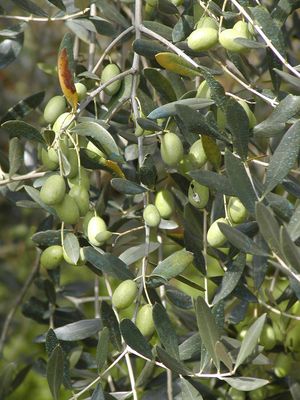Print This Page
Olive, Mission
Olive, European
Olea europaea 'Mission'
Native to the Mediterranean, Olive trees have quickly found their place in the Texas landscape. They are utilized for their hardiness with the weather, tolerance to poor soils, and manageable size. Some of the olive trees overseas are known to be over 1,000 years old.
The Olive tree often has multiple trunks, however often trained to have a single trunk; if it severely damaged or cut down, new trunks will emerge from the roots. The grey-green leaves are thick and leathery, with stomata on the undersides that aid in water conservation. Flower buds are borne on the axils of leaves, often budding up a year before they open. The inflorescences average 15 to 30 flowers, but are often inconspicuous, but with a slight fragrance.
The drupe olive fruits start green, and turn black when they ripen in the fall. It is commonly believed they are toxic, however they are simply extremely bitter and often get cured before being eaten.
 |
Speciman Tree |
 |
Xeriscape Tree |
Flower Color:White
|
 |
Height:30-40 Feet
|
 |
Spread:30-40 Feet
|
 |
|
USDA Hardiness Zone 8a
Available Sizes:
| Item |
Description |
| OLI-MIS-30 |
#030 OLIVE, MISSION (SHRUB) |

|
| OLI-MIS-05 |
#005 OLIVE, MISSION (SHRUB) |
|
Characteristics & Attributes
|
Deer Tolerance
|
Exposure
|
Habit
|
Soil pH Preference
|
|
Water Needs
|






